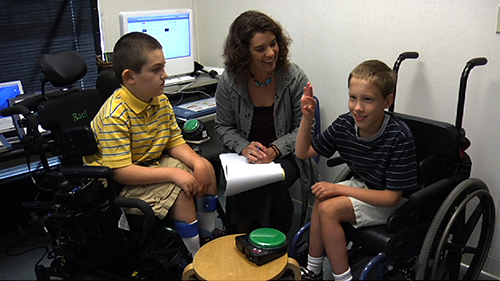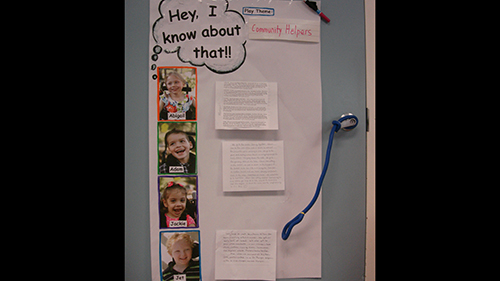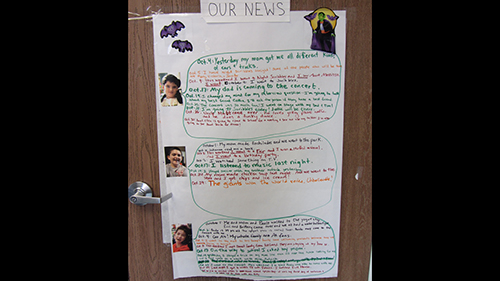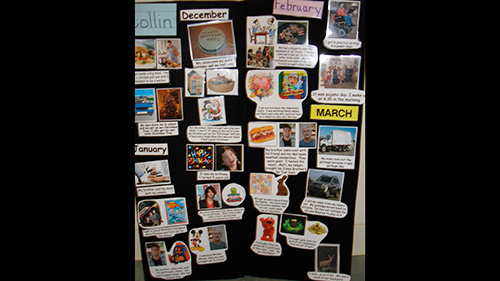At The Bridge School, we ask parents about each student’s specific interests, home and community experiences, motivating topics and non-preferred activities often and throughout the school year. We then integrate this information into our intervention practices. For example, a teacher might tailor instruction for a geography lesson based on the travel experiences of her students. Speech-language pathologists are always providing new vocabulary so a student can talk about a recent experience.
The Bridge School staff use several strategies to promote open and frequent communication with each child’s family.
Activate a single switch to take turns in simple age-appropriate conversations.

Jack and Raul take turns sharing Home News. For example, ‘Guess what happened.’ ‘Do you want me to tell you?’ ‘On Saturday, I visited someone.’ ‘My cousin was in town and she is awesome.’…
Request support for new vocabulary additions to high and low-tech AAC systems.

For each preschool theme, parents send in background information about their child’s experience with the concepts within that theme. This knowledge helps classroom staff relate classroom activities to student’s personal experiences and helps with vocabulary selection for communication tools.
Information is posted prominently in the classroom for easy access and student can refer to the ‘I Know About That’ board to talk about their past experiences or to request vocabulary additions to their communication books and devices.

Similar to the preschool ‘I Know About That’ board, monthly Home News topics for older students are archived and posted in the classroom for easy reference by classroom staff and so students can refer to their own personal narratives.
Low-tech archiving of student topics is quick and easy for staff. Topics and stories that the student prefers can be programmed into communication devices for later retelling.
Project unique personality and positive self-image using pre-programmed messages (songs, sound effects, age-appropriate language) on SGD.
Here is an audio sample on Trevor’s Home News around Superbowl time. Home News is recorded by families on a student’s Step-by-Step (or other SGD) and students share news with peers during the school day. Through this news, we learn about aspects of Trevor’s family and personality that we may not have otherwise known. Samples like this one can be archived and later programmed into a student’s SGD for repeated sharing.
Share personal past experiences with someone who did not participate in the activity.
Abigail’s parents sent in photos of a recent family event and wrote captions to describe what Abigail found most interesting. By continually updating the book, her family enabled Abigail to talk about her favorite experiences with her peers and the staff at school.
Express concepts using representational strategies.

Preferred topics from Home News are archived monthly and displayed along with picture supports. A rich multi-modal focus on communicating meaningful messages develops our students’ linguistic competencies over time.

Students reference their classroom displays to refer to Home News topics. Over time, students learn to decontextualize the symbol to talk about broader topics and the same images can be incorporated into additional customized communication supports. For example, Collin shared Home News about his father’s birthday party in December.
Later, he referred to the birthday cake picture when his teacher was talking about an upcoming birthday celebration. The picture of Collin’s dad’s birthday cake ultimately represented the concept ‘birthday’ in his SGD and in his communication book.